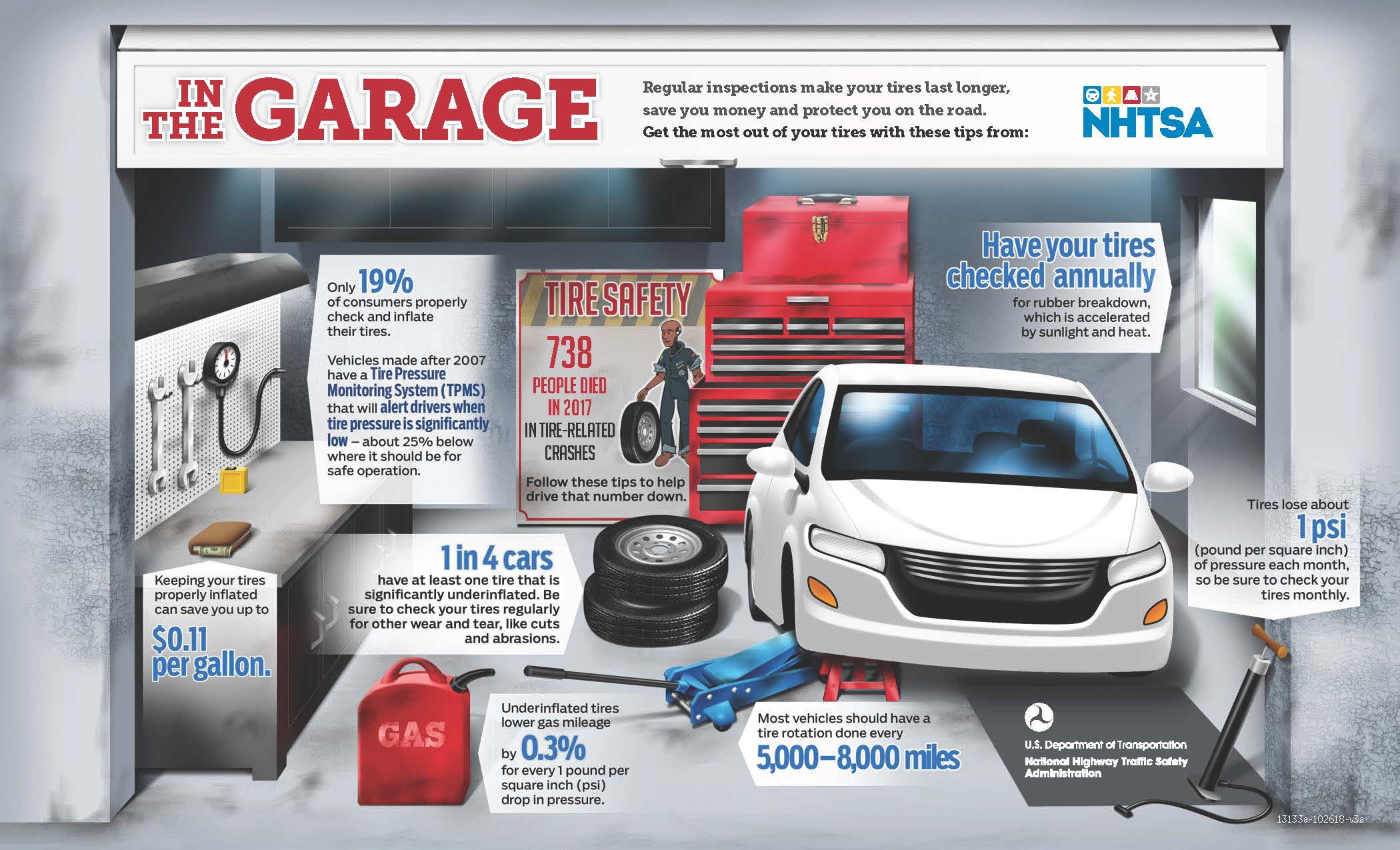Safety Tips
How well do you take care of your tires? Do you keep them properly inflated? If you care about your safety, and about saving money, it’s important to understand how tires affect your vehicle’s performance.
Poor tire maintenance---not having enough air in your tires and failing to rotate your tires, among other maintenance requirements—can lead to a flat tire, blowout, or the tread coming off your tire.
In 2017, total of 738 people died on the road in tire-related crashes.
Properly inflated tires can save you as much as 11 cents per gallon on fuel.
Only 19% of consumers properly inflate their tires. That means four out of five consumers are wasting money because of underinflated tires!
Proper tire maintenance like, rotation, balance and alignment, can help your tires last longer. In fact, properly inflated tires can extend the average life of a tire by 4,700 miles.

Five tire maintenance tips for safety and savings
-
Tire Pressure
Tire Tread
Balance and Alignment
Tire Rotation
Tire Size
Frequently Asked Question:
- My tire blew out, what should I do?
A tire blow out is a rapid loss of tire air pressure that can cause your vehicle to lose control. Here are some tips to help you stay safe in the event of a blowout.
The goal in any blowout is to keep the vehicle balanced and controllable. Don’t panic. Any overreaction---including slamming on the brakes or abruptly removing your foot from the accelerator –can result in a loss of control over the vehicle.
Instead, you should take the following steps:
Hold the steering wheel with both hands.
Maintain your vehicle speed if possible.
Gradually release the accelerator.
Look where you want the vehicle to go and steer in that direction.
Continue to slow down and pull off the road where and when you judge it’s safe to do so.
No matter which tire blows out—front or back—the steps for maintaining control of your vehicle are the same. The only difference is how you will feel it. In a front tire blowout, you feel the force more in the steering. In a rear blow out, you feel it more in the seat or body of the vehicle.

